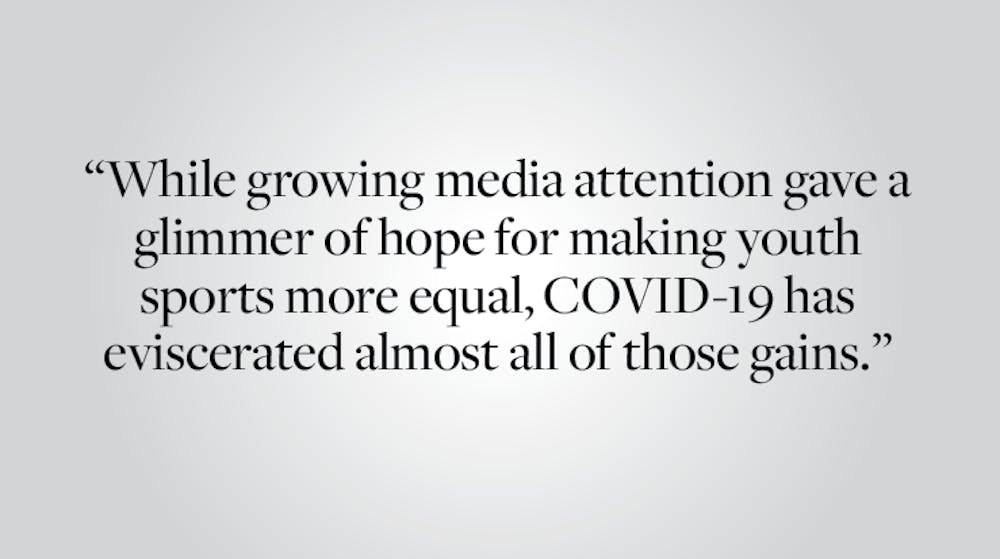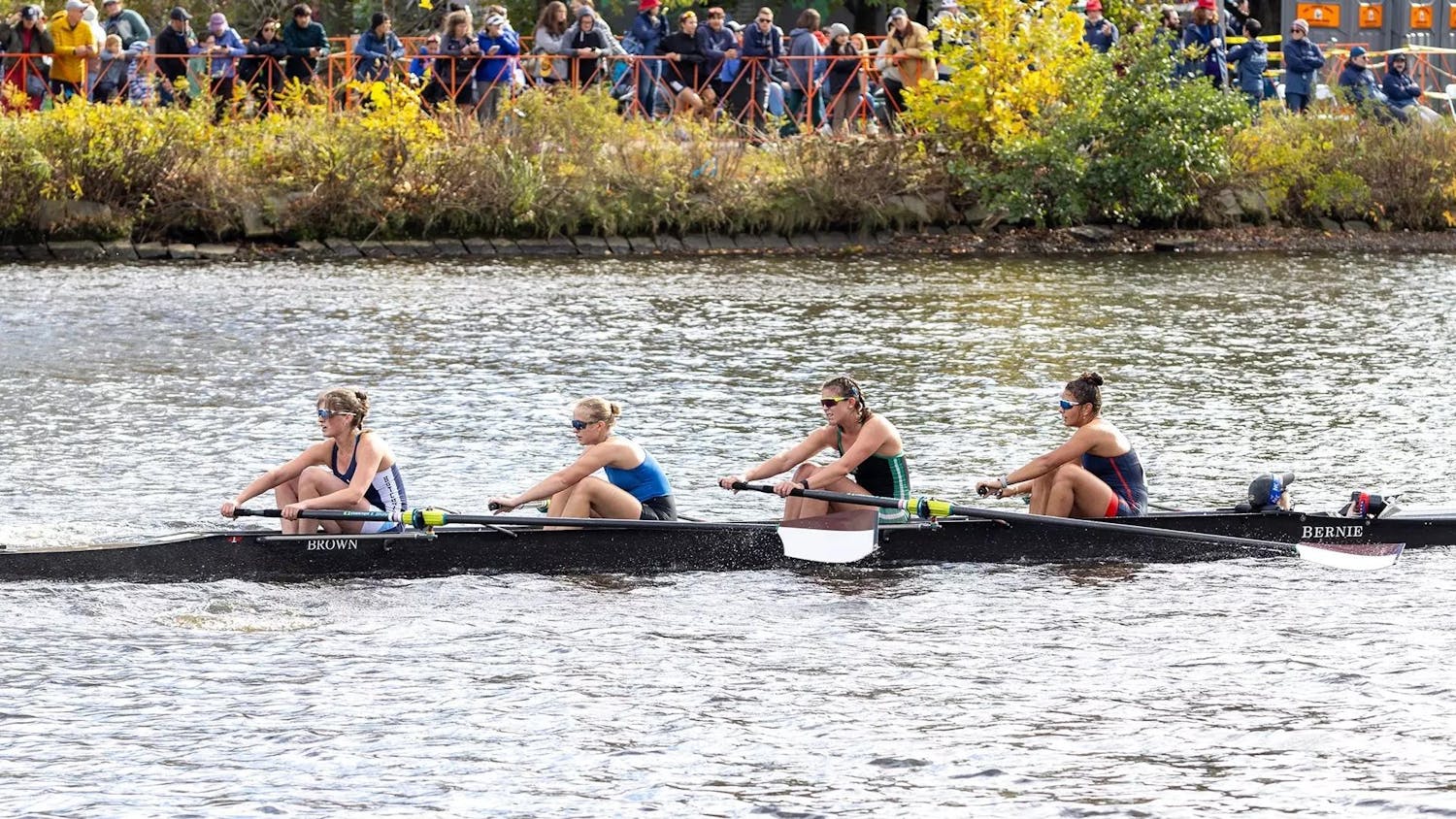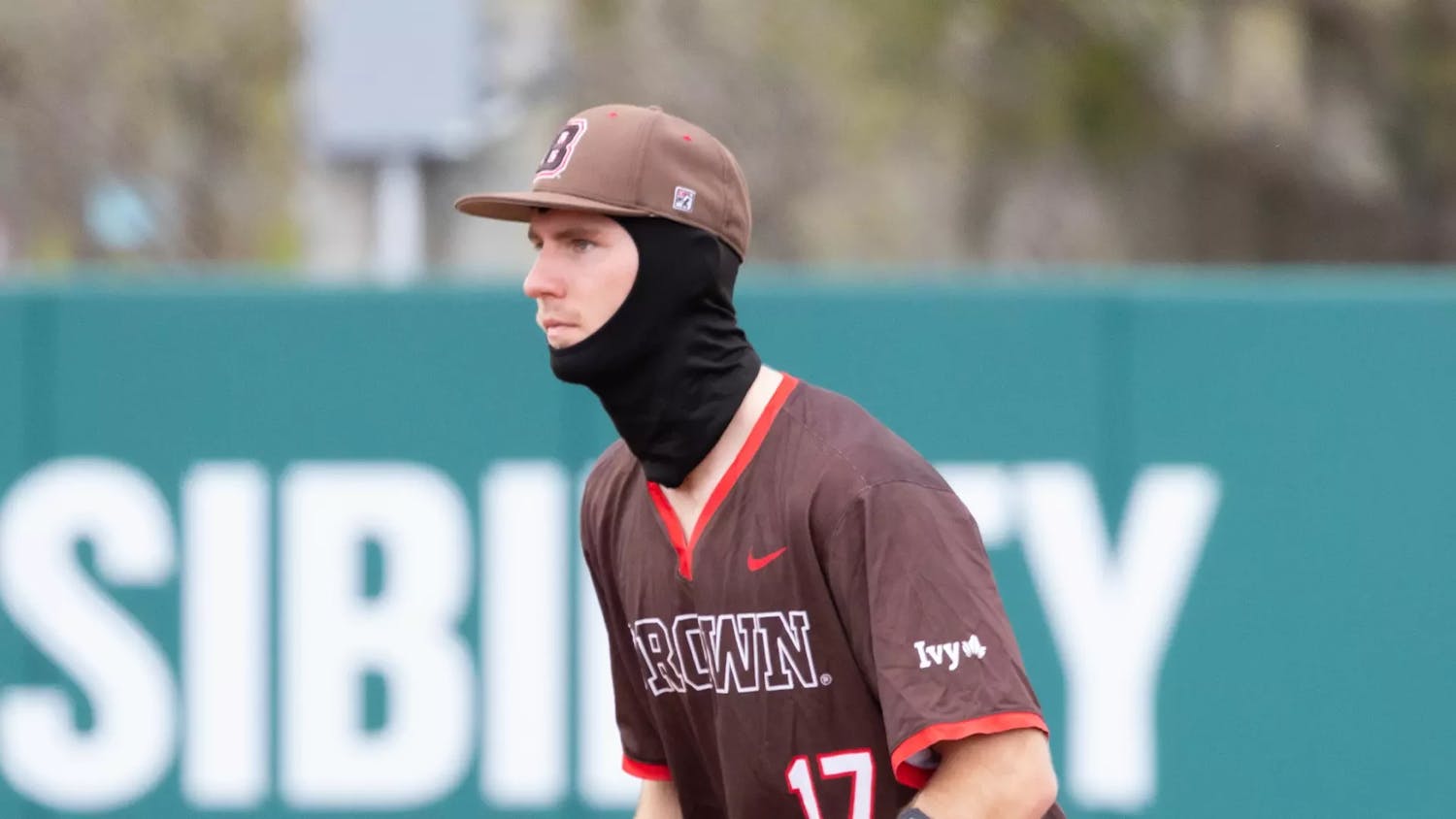In just about every facet of American life, the pandemic has worsened existing inequities — and youth sports are no exception. Even before the pandemic, the professionalization of sports had been making youth athletics less equal. But COVID-19 has driven yet another wedge between rich and poor youth athletes by jeopardizing the finances of not-for-profit sports leagues. As youth athletic participation is associated with a host of positive life outcomes, rebuilding youth sports leagues should be a post-pandemic priority.
A few decades ago, youth sports evoked images of “The Sandlot”: A low-stakes environment where almost everyone, regardless of ability or financial means, was able to participate. Now, it is a $15 billion industry dominated by elite, pay-to-play travel teams that increasingly serve a wealthy clientele. Parents of ambitious athletes these days can spend thousands (if not tens of thousands) of dollars on travel, equipment, team fees and even personalized training so that their children can play at an elite level. Sometimes, their kids haven’t even turned 10 by the time they get dropped into the vortex of elite youth sports.
Driving this frenzy of spending on youth sports and the subsequent emergence of a $15 billion industry is the aspiration of playing college sports. Since the 1990s, athletic scholarships from NCAA Division I and Division II schools have increased tenfold, bringing the dream of landing a college scholarship within reach for more families. While these scholarships sometimes help low-income students attend college, rich families — as they often do — are capitalizing on these opportunities as well, bidding up the price of participating on elite youth sports teams. A TD-Ameritrade study from 2019 found that 27 percent of parents whose children play club sports cough up more than $500 per month on this expense. After all, the club teams, recruiting services and skill development companies that have blossomed under the culture of Youth Sports Incorporated are profit-maximizing businesses. If they can rake in more money by raising fees and catering to the rich, they will do so.
The high prices of elite sports, however, is just one mechanism by which youth athletics have become more unequal. As privileged athletes flock to club teams, many not-for-profit community sports leagues have hollowed out. Not only does this create a divide between “the travel-team talents and the local leftovers,” in the words of the Atlantic’s Derek Thompson, but it also leaves community leagues with fewer resources. While not-for-profit leagues sometimes receive grants and sponsorships, the average league relies on fees for 69 percent of its budget. By reducing their fee-paying base, migrations toward club sports can leave these leagues cash-strapped. Moreover, parents cease to become advocates for their local league once their children switch to club sports, leaving the league with fewer people to assist in fundraising efforts. Since these club parents are often more privileged and well-connected, losing their fundraising abilities can deal a large blow to not-for-profit leagues.
The participation numbers of youth sports show the depressing ramifications of youth sports professionalization. A RAND Corporation study from 2019 found that 58 percent of not-for-profit leagues had to raise participation fees in the past five years, a likely result of the falling revenue base wrought by club sports. The Aspen Institute’s Project Play initiative found in 2019 that, as expected, low-income children aged six to 18 are six times more likely to abandon sports due to expenses compared to their wealthy peers. Different studies have different ways of defining sports participation, but almost all of them indicate that higher-income children participate at rates much higher than do lower-income children. A 2015 survey by the Pew Research Center, for example, found that while 84 percent of children from families earning more than $75,000 play sports, only 59 percent of children from families earning less than $30,000 do.
Anyone who believes that sports should be about more than securing college scholarships should be alarmed by the professionalization of youth athletics. Playing youth sports is associated with a host of not only positive health outcomes, like decreased risk of obesity, but also positive life outcomes further down the road. Organized athletics can build social skills, cultivate life-long friendships and enhance teamwork abilities at a young age. The downstream effects go even further, with some research finding that playing sports may improve students’ academic performance and increase their likelihood of attending college. If the expansion of elite youth sports continues to marginalize not-for-profit programs, wealthy children will be disproportionately able to reap the benefits of athletics. While growing media attention to this issue offered a glimmer of hope for solving this problem, COVID-19 has eviscerated almost all of those gains.
Although all forms of in-person youth sports have suffered over the past year, the pandemic has been far from an equalizer. For one, the small number of low-income families whose children play on expensive club teams may find themselves struggling to continue to pay fees once life returns to normal. This could be for two reasons: First, elite teams that have been inactive for a year may also have to raise additional fees, just as hollowed-out community leagues have been doing for the past few years to compensate for decreased participation. Second, low-income Americans have been the hardest hit by the pandemic recession, with three in 10 saying that their financial situation has worsened over the last year, according to the Pew Research Center. Surprisingly, among middle and upper income families, more have seen their financial situation improve than worsen. In other words, as more poor families are priced out, elite youth sports could become even more of a rich kids’ game.
Not-for-profit leagues are also in dire straits. While some received grants and loans under the Coronavirus Aid, Relief and Economic Security (CARES) Act, the youth sports community wanted something much larger: An $8.5 billion earmark for sports organizations. It never got it. And given that fees comprise a large portion of their revenue, community leagues have had very little cash flow during the pandemic, putting many on the brink of insolvency. In May of last year, a survey by Morning Consult found that 38 percent of the 290 programs polled could survive for another three months at most; 46 percent said they were at risk of shutting down permanently. While no data exists on which leagues have shuttered, we can hazard a guess that many of these leagues — given their forecasts back in May — have in fact closed down.
Furthermore, no vaccine has yet been approved for children. As three in four parents, according to Morning Consult, say that it is important that a COVID-19 vaccine is widely available before their children return to sports, it could be a long time before community sports leagues can start earning again. When youth sports finally do return, we can expect fewer leagues (and thus fewer opportunities to participate), along with higher fees to compensate for lost revenue. As a result, the income gap in sports participation will likely increase even further. Only a large influx of charitable donations or infusions of government money into not-for-profit sports programs can ward off fee increases and keep these leagues afloat.
Youth sports used to be able to bridge gaps between kids of different socioeconomic statuses. And the ballfield used to be a place where people of diverse backgrounds could find common ground in their love for the game. With the professionalization of youth sports — topped off by COVID-19 — that is no longer true. As long as zealous parents and ambitious students remain scholarship-obsessed, youth sports will unfortunately exacerbate differences between the haves and the have-nots. While the long-term solution to youth sports disparities is reducing income inequality as a whole, immediate cash relief to not-for-profit sports leagues can have a lasting impact after the pandemic. The more community leagues we can save, the more opportunities low-income children will have to play sports and reap all of the physical, emotional and cognitive effects associated with athletics.
Matt Walsh ’23 can be reached at matthew_walsh@brown.edu. Please send responses to this opinion to letters@browndailyherald.com and other op-eds to opinions@browndailyherald.com.

ADVERTISEMENT




